| Home Travel Index | First Posted: Apr 14, 2013 Jan 21, 2020 | ||
Helpful Cuba Tid Bits to Know Before VisitingMoneyBefore our trip to Cuba it was next to impossible to get the scoop on exchange rates between the US dollar and the CUC. Because of the strained relations with Cuba for many years anything US, including credit cards, ATM, US currency, etc. is no good in Cuba. US money is usually exchanged into the Cuban CUC which is a monetary unit used but not necessarily by the locals. We just returned from Cuba and the exchange rate was, simply put, one CUC = 85 cents US. My husband and I turned our US dollars into Canadian money before we left the states. At the time the exchange rate for the Canadian dollar was very good. This is something that fluctuates. When we got to Cuba we did very well by doing that. However, it must be checked out before you leave and you must remember that currency values change every day. We got lucky. We have allot of Canadian money left and are going to use it for a road trip to Canada this summer. So what is the CUC? Wiki describes it like this: "The convertible peso (sometimes given as CUC$) (informally called a chavito), is one of two official currencies in Cuba, the other being the peso. It has been in limited use since 1994, when it was treated as equivalent to the U.S. dollar: its value was officially US$1.00. On November 8, 2004, the U.S. dollar ceased to be accepted in Cuban retail outlets leaving the convertible peso as the only currency in circulation in many Cuban businesses. Officially exchangeable only within the country, its value was increased to US$1.08 on April 5, 2008, and reverted to US$1.00 on 15 March 2011. The convertible peso is, by the pegged rate, the thirteenth-highest-valued currency unit in the world and the highest valued 'peso' unit. Note: Differences in stores and money types: Ration Stores, Cuban Peso Stores, (Cuban state workers receive a portion of their wages in convertible pesos, the rest in national pesos. Shops selling basics, like fruit and vegetables, generally accept only the normal peso, while "dollar shops" sell the rest. The word "pesos" may refer to both non-convertible and convertible money. Cuban convertible pesos are 25 times more valuable, but this does not completely eliminate the confusion for tourists: since goods bought in national pesos have controlled prices, tourists are sometimes confused by prices perceived as "too cheap.") and CUC Stores (Better quality goods but more expensive. Many of these stores are frequented by the tourists and take only the CUC). Enjoyed a lunch at a local restaurant and then explored the main square and the Punto Gordo peninsula.
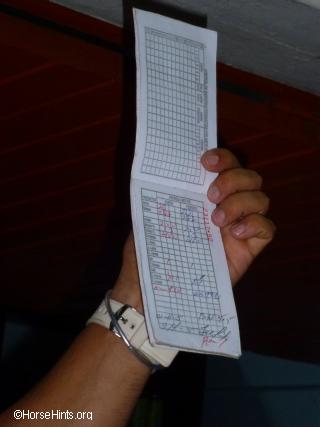 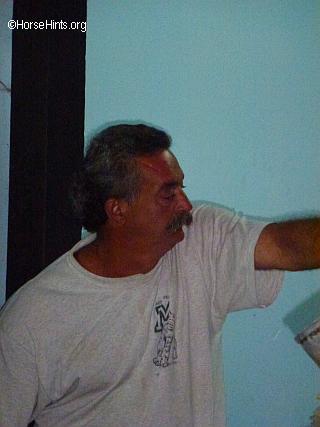 Top: Ration Store, Left: Ration Card, Right: Store Manager Cuban Ration Store also referred to as a Ration Bodega From 1993 until 2004, the Cuban currency was split between the Cuban peso (the currency Cuban citizens are paid in and used for staples and non-luxury items) and the U.S. dollar in combination with the convertible peso, which was used for tourism and for luxury items. The Cuban peso (CUP) can be exchanged to the convertible peso (CUC) at the exchange offices (CADECA), at a fixed rate of 24 CUP to 1 CUC (sell) and 25 CUP to 1 CUC (buy); however, for state household book-keeping purposes, both pesos are valued at a 1:1 rate. On 8 November 2004, the Cuban government withdrew the U.S. dollar from circulation citing the need to retaliate against further U.S. sanctions. After a grace period ending on November 14, 2004, a 10% surcharge began to be imposed when converting U.S. dollars into convertible pesos. The change was announced some weeks beforehand and was extended by the aforementioned grace period (it has been claimed this was because the amounts of US dollars being exchanged were more than anticipated). This measure helped the Cuban government collect hard currency. CoinsIn 1994, coins were introduced in denominations of 5, 10, 25 and 50 centavos, and 1 peso. 5 pesos (rarely seen) was introduced in 1999, followed by 1 centavo coins in 2000." Note: Under current regulations enforced by the US Department of the Treasury, Office of Foreign Assets Control, any persons subject to US jurisdiction traveling to Cuba as licensed travelers, are permitted to spend a maximum of $187.00 per day. US travelers are able to purchase clothing, trinkets and beverages. Although there are monetary limits set for some items there is no spending limit on books, art, sculptures and paintings. Cuban cigars and rum are forbidden to bring into the US. There is also a departure tax of $25 CUCs at the airport. Tipping in CubaTipping is very much a part of the Cuban culture. Remember that the average monthly salary in Cuba is $30.00 US. Tips from the tourism industry really help the local people. In the hotels we always tipped 2-4 CUC each day for each person. At the Paladars (privately owned restaurants--more about this later) we tipped 15% unless the service gratuity was included. We also tipped the local guides, taxi drivers (10%), horse-drawn carriage driver and guide, etc. Cuban License PlatesThe Cuban license plates tells you allot if you know what the colors mean. It can tell you where the owner of the car stands after the revolution, your nationality, your rank, your employment, where you live, etc. The color coding of license plates is a system copied from the former Soviet Union. The system also allows the government to keep a watch on the people and their vehicles. Most of the cars are owned by the government. Those license plates are blue.
The first letter of the license plate tells which of the 14 provinces the car is from. For example, "H" is for Havana. The letter "K" means the car is owned privately by a person or a foreign firm. On diplomatic tags the last three digits tell the rank of the driver. It should be noted that in order to purchase a new vehicle one must have permission from the government. One must be able to justify how they can afford to buy a new car when 90% of the economy has an average of only $30.00 a month. One must keep in mind that Cuba is a Communist state.  Thumbs up and a peace sign from occupants of this old American Chevy/Yellow tag. Transportation/Getting Around in Cuba You can walk, go on a rig shaw type conveyance with a driver peddling, take the horse drawn carriage to see old Havana, buses, coco cabs, old restored cars that are licensed to carry passengers. Make sure to know the approximate fare before you get in. The coco cabs have meters but many other types of cabs do not. We tipped the drivers 10% of the fare. The trains are not reliable we were told as a 5 hour train trip may end up 24 hours. Yikes! 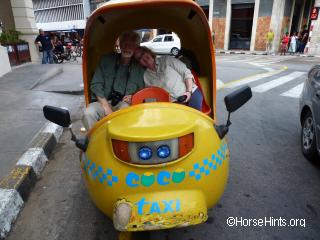 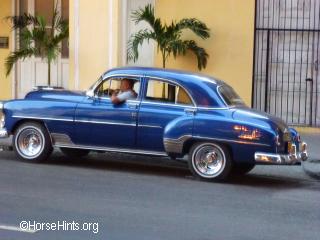 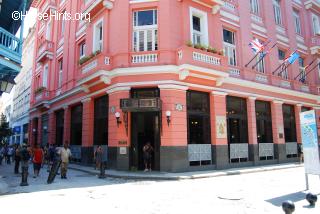  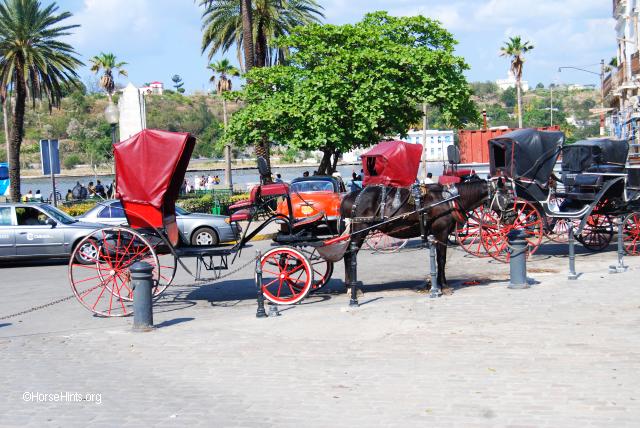 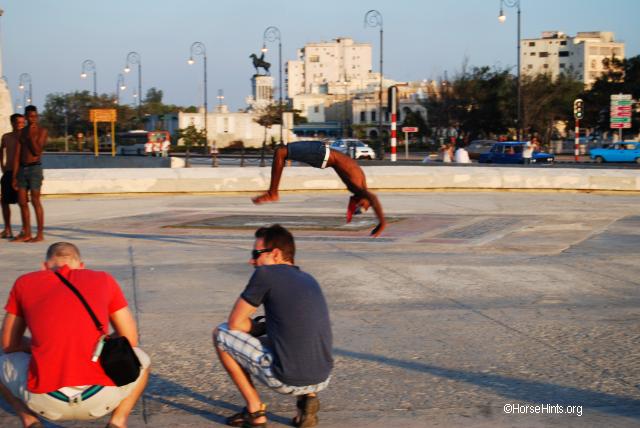 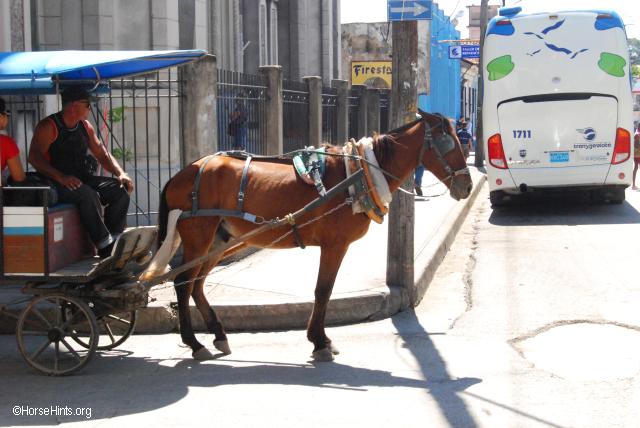  Many Means of Transportation! Educational System and School UniformsThe University of Havana was founded in 1728 and there are a number of other well-established colleges and universities. In 1957, just before Castro came to power, the literacy rate was fourth in the region at almost 80% according to the United Nations, higher than in Spain. Castro created an entirely state-operated system and banned private institutions. School attendance is compulsory from ages six to the end of basic secondary education (normally at age 15), and all students, regardless of age or gender, wear school uniforms with the color denoting grade level. Primary education lasts for six years, secondary education is divided into basic and pre-university education. Higher education is provided by universities, higher institutes, higher pedagogical institutes, and higher polytechnic institutes. The Cuban Ministry of Higher Education operates a scheme of distance education which provides regular afternoon and evening courses in rural areas for agricultural workers. Education has a strong political and ideological emphasis, and students progressing to higher education are expected to have a commitment to the goals of Cuba. Cuba has provided state subsidized education to a limited number of foreign nationals at the Latin American School of Medicine. Internet access is limited. The sale of computer equipment is strictly regulated. Internet access is controlled, and e-mail is closely monitored. The Higher Institute of Technologies and Applied Sciences is a Cuban educational institution that prepares students in the fields of nuclear and environmental sciences. It is the only institution in Cuba that provides the opportunities of studies in these topics and one of the few in Latin America. Its headquarters is in Havana, inside the territory of the "Quinta de los Molinos". Note: Cuba 98% of the population is literate. There are pre-schools and nursery schools. The main school system is divided into primary and secondary school levels. Children, ages 4-6, attend kindergarten. At the level the children are socialized learning self and class discipline, the Cuban National Anthem, and the introduction to math and reading. Secondary Schools - There are two levels to secondary schools--basic and upper levels. It is important to note that there is also another category called technical secondary. Basic Secondary - Children 12-15 years of age attend basic secondary school. The program is three years. Upon completion of the program they receive a Secondary School Completion Diploma. At this juncture the graduates have two choices. The can go with the pre-university track or the technical education track. The program for upper secondary education is a 3 year program. The ages are 15-18 years of age. Upon graduation the students receive a Bachillerato Certificate. The students who chose the technical are able to pursue skilled worker or middle-level technician. The graduates can attend technological institutes. The students who choose the pre-university track may continue on at the university level. About the Schools
UniformsThe uniform varies by school level. Kindergarten children wear a white top, blue bottom, and blue scarf. Primary children wear a white top, red bottom, and red scarf. The secondary school uniform is a white top and yellow bottom. The Plantation Schools have a white top and navy blue bottom. Medical school students wear a white top and purple bottom. It should also be noted that Cuban secondary schools have a mandatory cadet program which provide basic military training. Depending upon what level one may be dictates what the uniform will be. Red Pants, shorts and suspender skirts are worn by the elementary children. (Cuban girls wear red suspender skirts. The suspender affairs appear to be a required element of the uniform.) School children wear white shirts. The boys wear white short sleeved shirts with collars. Many of the girls appear to wear shirts without collars. Kerchiefs are worn often with a blue or red Young Pioneer marking. The colors signify what stage the child has attained in the Communist Party youth group. When the boys have earned their red scarves they usuualy wear long pants.
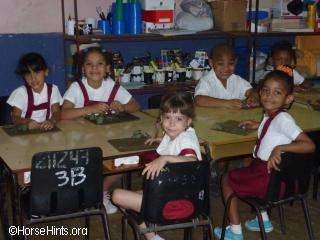 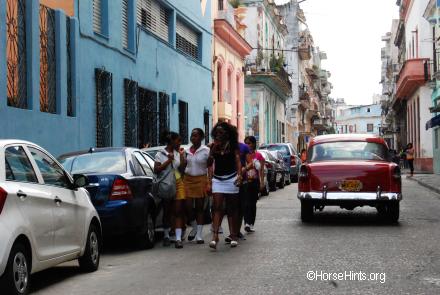 Elementary school children (left), Secondary school girls tan and white (right). 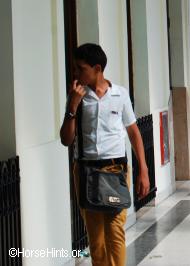 Secondary school boy. There are no alternatives to the school clothing. The clothing is rationed in Cuba and issued by the Cuban government. "The younger children (grades 1-4) for years received short pants and the older boys (grades 5 and up) received long pants. Girls received suspender cullotes. The Goverment announce in 1998 that they were going to issue shorts for 5 and 6th graders as an economy measure. A January 1998 press report, 'Cuba schoolboys to get shorts pants,' indicated, 'Cuba is cutting pants to cut costs, declaring that is replacing schoolboys' slacks with shorts to save cloth. Cuban fifth- and sixth-graders soon will be issued Bermuda shorts, with hems hitting just below the knees, the communist government said this week. The Communist Party daily Granma said the measure would allow the government to produce 28,000 more school uniforms for Cuban children for the 1998-99 school year. The move is among a series of austerity measures Cubans can expect this year as the government struggles to overcome the economic crisis that began almost a decade ago. The economy shrank by 35 percent between 1989 and 1994 with the collapse of Cuba's socialist trading partners in Eastern Europe. While the economy has been growing at a modest rate, the government is looking for additional ways to save money and become more self-sufficient. The school uniform change is part of that strategy. The government also is moving to become more independent in food production in an attempt to cut down on the costs of importing food. Cuban officials said in late December that they expect only modest economic growth in 1998, a smaller sugar harvest and continued economic austerity measures. The party newspaper put a positive spin on the change in school uniforms, saying it better fit with `the actual tendencies of fashion and climate in our country.' All Cuban children attend government schools and are issued uniforms with white shirts or blouses. Younger boys receive shorts and older boys wear long pants. Girls wear culottes.'" Cuban School Uniforms Electrical Voltage
The two hotels where we stayed had hair dryers that worked. One hotel had both US voltage and Cuban voltage. The other did not. I took a adapter that we have used all over the world without problems. In Cuba, the curling iron would light up but not heat at both hotels. There just is not enough "juice" to keep it going. All of our other electrical appliances worked with the adapter such as the camera batteries, shaver, hair dryer (I tried mine just out of curiosity), etc. Only the curling iron would not heat. For More Information: Cuba (Our Itinerary)Cuba Buena Vista Social Club Cuban Cigars Cuban Criollo Horse/Many Gaited Cuban Lime Diaquiri Cuba's History Cuban Paladars Salvador Gonzáles Escalona Cuba Yank Tank/Pre-Revolution American Cars Galleries: |